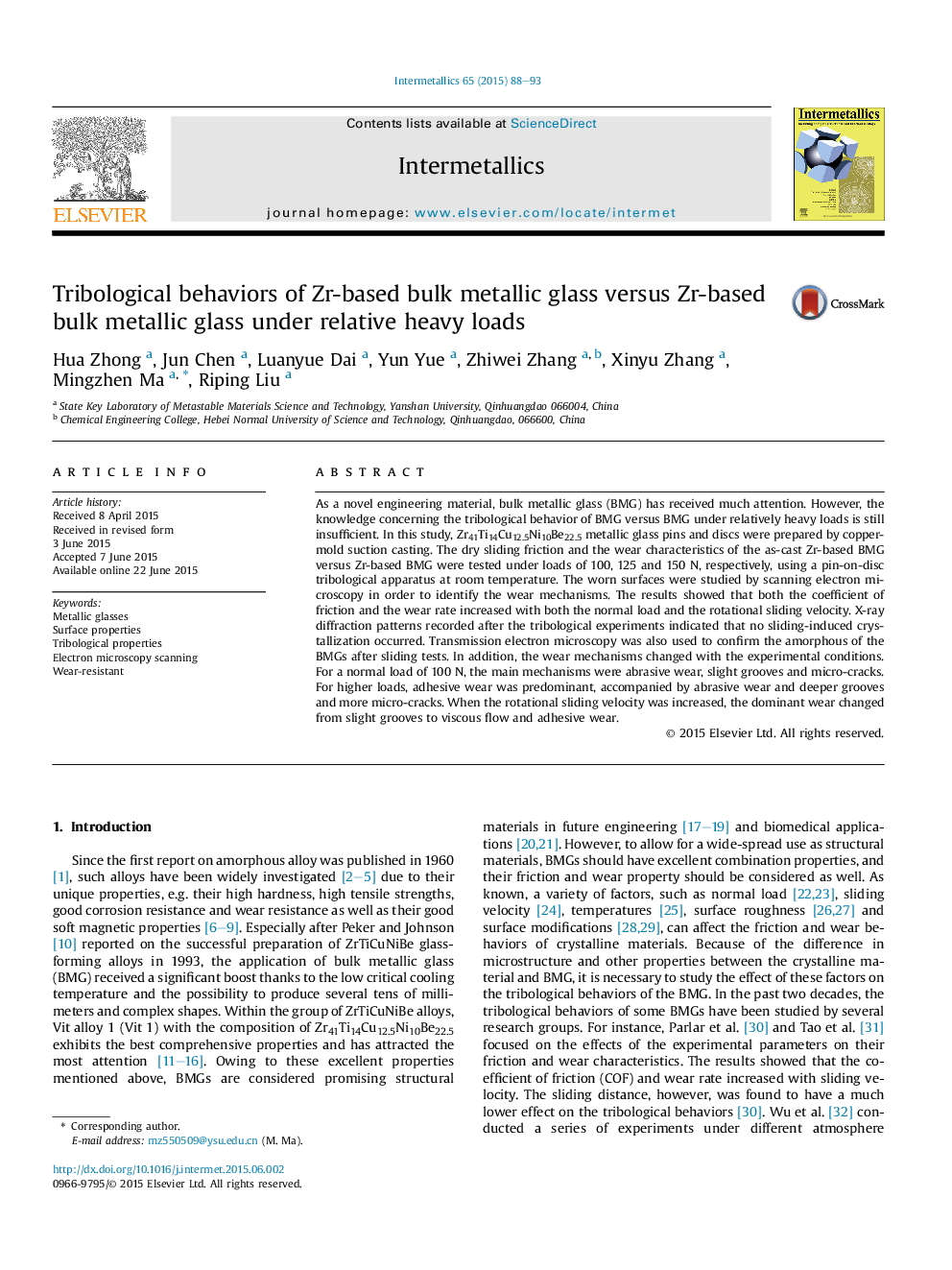| کد مقاله | کد نشریه | سال انتشار | مقاله انگلیسی | نسخه تمام متن |
|---|---|---|---|---|
| 1599757 | 1515846 | 2015 | 6 صفحه PDF | دانلود رایگان |

• Tribological tests are Vit 1 sliding against Vit 1 alloy under relative normal loads.
• No sliding-induced crystallization occurs after the friction and wear tests.
• Tribological behaviors are investigated under relative normal loads conditions.
As a novel engineering material, bulk metallic glass (BMG) has received much attention. However, the knowledge concerning the tribological behavior of BMG versus BMG under relatively heavy loads is still insufficient. In this study, Zr41Ti14Cu12.5Ni10Be22.5 metallic glass pins and discs were prepared by copper-mold suction casting. The dry sliding friction and the wear characteristics of the as-cast Zr-based BMG versus Zr-based BMG were tested under loads of 100, 125 and 150 N, respectively, using a pin-on-disc tribological apparatus at room temperature. The worn surfaces were studied by scanning electron microscopy in order to identify the wear mechanisms. The results showed that both the coefficient of friction and the wear rate increased with both the normal load and the rotational sliding velocity. X-ray diffraction patterns recorded after the tribological experiments indicated that no sliding-induced crystallization occurred. Transmission electron microscopy was also used to confirm the amorphous of the BMGs after sliding tests. In addition, the wear mechanisms changed with the experimental conditions. For a normal load of 100 N, the main mechanisms were abrasive wear, slight grooves and micro-cracks. For higher loads, adhesive wear was predominant, accompanied by abrasive wear and deeper grooves and more micro-cracks. When the rotational sliding velocity was increased, the dominant wear changed from slight grooves to viscous flow and adhesive wear.
Journal: Intermetallics - Volume 65, October 2015, Pages 88–93